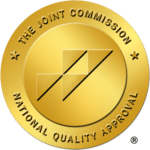Alcohol Treatment Center in Greystone Park, NJ.
At our addiction treatment center in New Jersey, we are truly excited to establish a connection with you and extend our support as you progress towards your journey to recovery from addiction.
At our addiction treatment center in New Jersey, we are truly excited to establish a connection with you and extend our support as you progress towards your journey to recovery from addiction.

At Lifetime Recovery Center, we make your journey to a life free from alcohol comforting and supportive. In the calming surroundings of Greystone Park, NJ, we’ve created a place where you can focus on your healing. Our center is filled with warmth, kindness, and people who understand your journey. We’re located in the heart of Morris County, a community that is here to support you.
Our team is more than just staff; they are a family ready to give you the personalized help you need. We are here to listen, understand, and help you through each step of your recovery process. We value your individual journey, and we tailor our programs to meet your specific needs, ensuring you get the most out of your time with us at Lifetime Recovery Center.
If you’re looking for a place to start your recovery journey, call us at 844-896-8156. Let us join you in your path to recovery, offering guidance, support, and care to help you build a fulfilling life without alcohol.

At Lifetime Recovery Center in Greystone Park, NJ, we offer a beacon of hope. We’re here to provide a variety of treatments that are as unique as you are. We understand that everyone’s journey is different, and our approach is to create a plan that works best for you, making your path to recovery as smooth as possible in the supportive environment of Morris County.
We have a range of services, all designed to meet your needs and support your recovery process. Our goal is to give you the tools and guidance necessary to overcome the challenges you face. Every plan we create is aimed at ensuring you achieve lasting recovery and lead a fulfilling life.
Feel free to reach out to us at 844-896-8156. We are here to discuss the different ways we can support you, helping you make the best decision for your journey to a happier life.

Community is key in the recovery process. At Lifetime Recovery Center, located in Greystone Park, NJ, we ensure you’re surrounded by a supportive community that cares about your recovery. In the harmonious environment of Morris County, you’ll find a network of support that fosters your journey to sobriety, helping you feel connected and understood.
We don’t just stop at treatment; we believe that ongoing support is crucial for lasting recovery. We’re here to offer continuous guidance, helping you navigate life’s challenges with confidence as you move forward in your sobriety journey in Greystone Park, NJ. You’ll always find a supportive community ready to assist and guide you at Lifetime Recovery Center.
Let us be your companion in your journey towards a life of recovery and fulfillment. Connect with us, and experience the transformative power of community support and ongoing care in your path to sobriety.
The idea for such a facility was conceived in the early 1870s at the persistent lobbying of Dorothea Dix, a nurse who was an advocate for better health care for people with mental illnesses. At that time in history, New Jersey’s state-funded mental health facilities were exceedingly overcrowded and sub-par compared to neighboring states that had more facilities and room to house patients. Greystone was built, all 673,700 square feet (62,590 m2) of it, in part to relieve the only – and severely overcrowded – “lunatic asylum” in the state, which was located in Trenton, New Jersey. Because of her efforts, the New Jersey Legislature appropriated $2.5 million to obtain about 743 acres (301 ha) of land for New Jersey’s second “lunatic asylum”. Great care was taken to select a location central to the majority of New Jersey’s population. After visiting approximately 42 different locations, officials approved purchase of a portion of a few farms and lots, on August 28, 1881, near Morristown and a short distance from the Morris and Essex Railroad. The plots of land contained fertile soil, rock quarries for mining stone, a sand pit for building materials and reservoirs for water and ice access. The new asylum, when completed, would hold approximately 600 patients, with the large main building to be completed in sections as usage detailed. The plan of the main building was drafted to allow for a total of 40 wards split into two wings, one wing for each sx. There was to be no communication between wards. The corridors served a purpose other than just separating wards: they provided for fire protection, so that a fire would be unable to spread past a single section of the building. Upper floors in the center section contained apartments for employees, and the third story contained the amusement room and chapel for patients. Samuel Sloan was named architect of the main building and its smaller supporting buildings. Sloan chose to follow the Kirkbride Plan, a list of ideals pertaining to hospital design created by Thomas Story Kirkbride. There would be a center section for administrative purposes, then a wing on each side with three wards on a floor. Each ward would be set back from the previous one to allow patients to take in the beautiful grounds from their wards. Each ward was designed to accommodate 20 patients, with a dining room, exercise room and activity room. The wards were furnished with the highest quality materials such as wool rugs, pianos and fresh flowers.
Patients worked on the farms growing and raising food and performed hard labor tasks in the clearing away of building debris, excavating for roads, and sodding grounds. The plan of the institution called for carriage drives ending at all doorways, and a central road leading up to the front entrance flanked by trees on both sides. Grounds on both sides of the wings would provide for simultaneous exercise of both sexes while keeping them separate. An industrial building opened in 1894, allowing for more jobs for patients than just manual labor jobs in farming or groundworks. It was a widely popular belief that putting the insane to work in certain circumstances was beneficial both to the patient and the institution. Those who were chronically ill, restless in the day and night, were thought to be aided in their general well-being by working out some of the oversupply of blood to the brain. Within the walls of the new building, male patients were able to make brooms, rugs, brushes, carpets, and do printing and bookmaking.
By 1895, the State Lunatic Asylum was operating at 365 patients over capacity. The overcrowding was a major health and cleanliness issue, resulting in a small outbreak of typhoid fever, eventually blamed on the water supply. The passing of years brought no relief for a bursting hospital, occupied with 1,189 patients bedded down in an institution meant to hold only 800 every night. Cots were placed in activity rooms, exercise halls and hallways in order to try to find sleeping arrangements for all. “From a sanitary point of view these cots are an abomination,” declared the board of managers. Cots were set up and taken down on a daily basis on the hallways, and were not able to be cleaned between uses. Patients often soiled themselves during the night, and the cots were simply handed out again the following evening.
Learn more about Greystone Park.Here are some therapy-related resources you may find useful:
